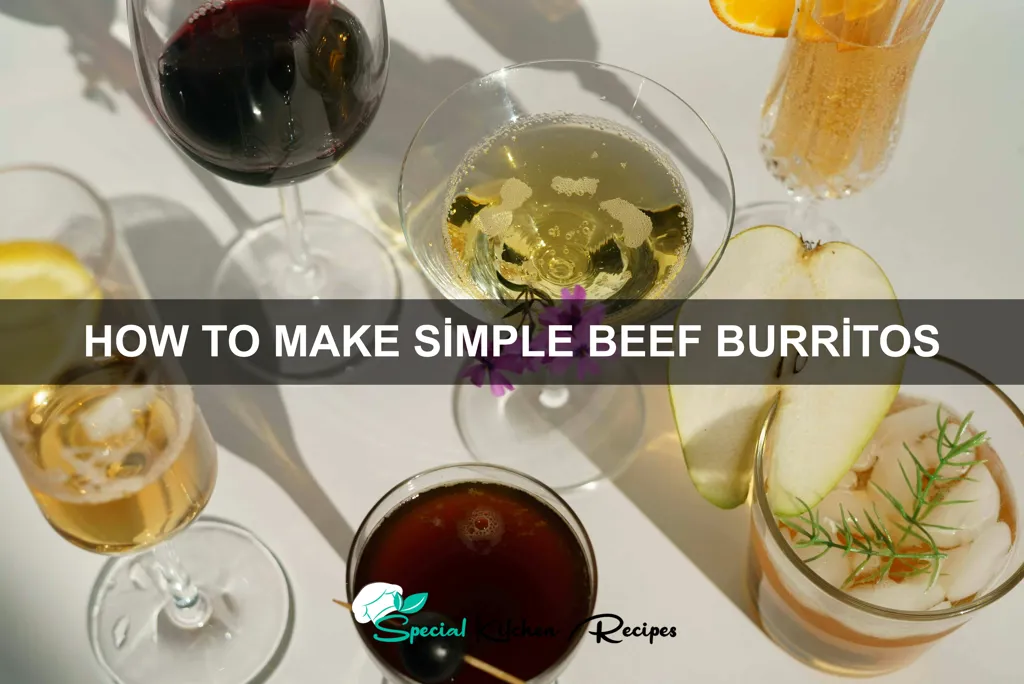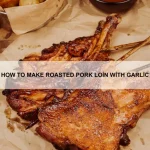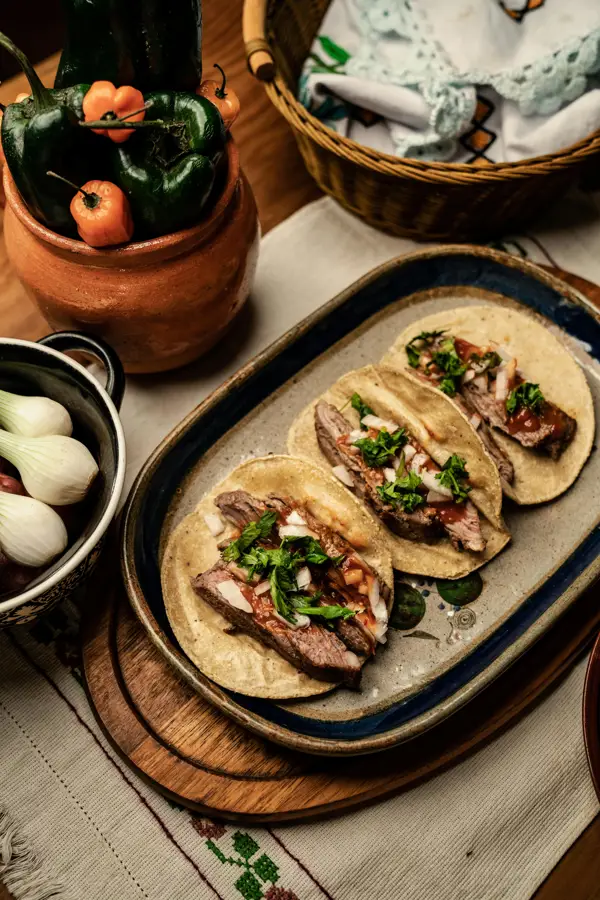The humble beef burrito, a culinary cornerstone of Mexican-American cuisine, boasts a surprisingly rich and complex history, far exceeding its simple appearance. While pinpointing its exact origin is difficult, its evolution is intrinsically linked to the Northern Mexico and Southwestern United States border regions. The burrito’s ancestor isn’t a single dish, but rather a culmination of existing traditions. The flour tortilla itself, a staple of Mexican culture, has been a foundational food for centuries, its use predating the arrival of Europeans. The filling, often a simple beef stew, reflects the influence of Spanish colonization and the readily available ingredients of the region. Early versions likely involved simpler fillings and were more akin to a quick, portable meal for workers or travelers.
The modern beef burrito, with its characteristically larger flour tortilla and generously filled interior, gained widespread popularity in the mid-20th century, particularly in the United States. The rise of fast-food chains played a significant role in its dissemination, making it a readily accessible and affordable option for millions. Today, the burrito reigns supreme as a favorite fast-casual meal, with countless variations reflecting regional preferences and individual tastes. Statistics show that the average American consumes a staggering amount of burritos annually, highlighting its enduring appeal. While precise numbers vary depending on the source, it is clear that the burrito holds a significant place in the American diet, with sales of burrito-related products reaching billions of dollars yearly.
Beyond its commercial success, the burrito holds significant cultural weight. It embodies a fusion of culinary traditions, reflecting the historical and social dynamics of the borderlands. It’s a symbol of cultural exchange, adaptation, and the ever-evolving nature of food. Furthermore, the burrito transcends socioeconomic boundaries, enjoyed by individuals across different demographics. Its adaptability is a key element of its appeal; from street vendors serving simple, authentic versions to upscale restaurants offering gourmet interpretations, the burrito’s versatility ensures its continued relevance in the ever-changing landscape of global cuisine. This recipe will guide you through creating a delicious and satisfying simple beef burrito at home, allowing you to appreciate the history and flavor of this iconic dish.
Ingredients and Measurements
This recipe yields approximately 6 large beef burritos. Accurate measurements are crucial for achieving the perfect balance of flavors and textures. Using a kitchen scale for ingredients like the ground beef will ensure consistency.
Ground Beef: 1.5 lbs (680g) of lean ground beef (around 80/20 is ideal). Using leaner ground beef helps keep the burritos from being overly greasy, while a bit of fat ensures juiciness. Avoid using extra-lean ground beef as it can become dry during cooking.
Taco Seasoning: 2 tablespoons of your favorite taco seasoning. You can easily make your own using chili powder, cumin, paprika, garlic powder, onion powder, oregano, and cayenne pepper (optional for heat). Adjust the amount of seasoning to your preference; start with less and add more to taste.
Onion: 1 medium yellow onion, finely chopped (approximately 1 cup). White or red onion can be substituted, but yellow onion provides a good balance of flavor and sweetness.
Bell Pepper: 1 medium bell pepper (any color), finely chopped (approximately 1 cup). Adding bell pepper enhances the flavor and adds a nice crunch. Consider using a combination of colors for added visual appeal.
Canned Diced Tomatoes: 1 (14.5 ounce) can of diced tomatoes, undrained. The juices from the canned tomatoes add moisture and flavor to the beef mixture. Using fire-roasted diced tomatoes adds a smoky depth of flavor.
Water or Beef Broth: ½ cup of water or beef broth. This helps to create a saucier filling and prevents the beef from drying out during cooking. Beef broth will add more depth of flavor than plain water.
Burrito Size Flour Tortillas: 6 large (10-12 inch) flour tortillas. Warm the tortillas slightly before filling for better flexibility and to prevent cracking. You can warm them in a dry skillet, microwave, or oven.
Optional Toppings: Shredded cheddar cheese, shredded lettuce, diced tomatoes, sour cream, guacamole, salsa – add your favorite burrito toppings to personalize your creation! Prepare your toppings ahead of time for easy assembly.
Important Note: Always ensure your ingredients are fresh. Properly store leftover ingredients according to their individual instructions.
Equipment and Utensils
Making delicious beef burritos requires the right tools. While you can improvise, having the correct equipment will significantly enhance the process and the final product. Let’s break down the essential items you’ll need, categorized for clarity.
Large Skillet (12-inch or larger): A large skillet, preferably non-stick, is crucial for browning the beef and sautéing the onions and peppers. The larger size allows for even cooking and prevents overcrowding, which can lead to steaming instead of browning. A cast iron skillet works wonderfully, imparting a rich flavor, but a good quality non-stick option is perfectly suitable for easier cleanup.
Mixing Bowls (at least two, medium-sized): You’ll need one bowl to season and combine the ground beef mixture, and another to prepare the burrito filling. Choose bowls that are large enough to comfortably handle the ingredients without overcrowding. Stainless steel or glass bowls are recommended for their durability and ease of cleaning.
Measuring Cups and Spoons: Accurate measurements are key to achieving consistent results. Invest in a reliable set of measuring cups and spoons to ensure you’re using the correct quantities of spices and other ingredients. Dry measuring cups for dry ingredients and liquid measuring cups for liquids will ensure accuracy.
Large Wooden Spoon or Spatula: A sturdy wooden spoon or spatula is ideal for stirring the beef mixture in the skillet. Avoid using metal utensils in non-stick pans to prevent scratching the surface. A sturdy spatula is also helpful for flipping the burritos during cooking.
Cutting Board and Sharp Knife: A good quality cutting board and a sharp knife are essential for chopping the onions and peppers. A sharp knife ensures clean cuts and prevents bruising the vegetables, which can affect their texture and flavor. Choose a cutting board that’s large enough to comfortably work on and easy to clean.
Large Burrito-Sized Tortillas (10-12 inches): The size of your tortillas will depend on your preference, but 10-12 inch tortillas are a common size for burritos. Warm the tortillas before filling to make them more pliable and easier to roll. You can warm them in a dry skillet or microwave.
Serving Platter or Basket: Once your burritos are assembled, you’ll need a platter or basket to serve them. This allows for easy presentation and serving.
Optional: Food Processor (for faster chopping): While not strictly necessary, a food processor can significantly speed up the chopping of onions and peppers if you prefer a finer chop.
Beef Preparation (Browning, Seasoning)
Before we assemble our delicious beef burritos, let’s focus on preparing the star ingredient: the beef. We’ll be browning the beef to develop a rich flavor and then seasoning it perfectly. For this recipe, we’ll use 1.5 lbs of ground beef, but you can adjust the quantity based on how many burritos you’re making.
Start with a hot pan: This is crucial for achieving a good sear. Use a large skillet (cast iron is ideal) over medium-high heat. Add 1 tablespoon of vegetable oil to the hot pan. Don’t overcrowd the pan; work in batches if necessary to ensure proper browning. Overcrowding will steam the beef instead of browning it.
Add the ground beef: Once the oil is shimmering, add the 1.5 lbs of ground beef to the skillet, breaking it up with a spoon as it cooks. Avoid constantly stirring; let the beef sit undisturbed for a few minutes to develop a good crust on the bottom. After about 3-4 minutes, use a spoon to break up any large clumps and stir gently.
Browning the beef: Continue cooking, stirring occasionally, until the beef is browned throughout. This will take approximately 8-10 minutes. The beef should be a deep brown color, not just pink. Drain off any excess grease once it’s cooked.
Seasoning is key: Now that the beef is browned, it’s time to season it. We’ll use a simple but effective blend of spices. Add 1 teaspoon of chili powder, 1/2 teaspoon of cumin, 1/4 teaspoon of smoked paprika, 1/4 teaspoon of garlic powder, 1/4 teaspoon of onion powder, and 1/2 teaspoon of salt. Adjust the seasonings to your taste; some people prefer a spicier burrito!
Combine and simmer: Stir the seasonings into the browned beef thoroughly. You can add about 1/2 cup of beef broth or water to deglaze the pan, scraping up any browned bits from the bottom. Let it simmer for another 5 minutes, allowing the flavors to meld together. This step creates a richer, more flavorful filling for your burritos. Remember to taste and adjust the seasoning before moving on to the next step. You might need a little more salt or a pinch of cayenne pepper for extra heat.
Important Note: For a leaner burrito, you can drain off more of the grease after browning the beef. However, remember that some fat adds flavor, so don’t be too aggressive with draining.
Vegetable Preparation (Chopping, Sautéing)
For delicious beef burritos, properly prepared vegetables are key. We’ll be using a simple combination of onion, bell pepper, and garlic, but feel free to experiment with your favorites like zucchini, mushrooms, or corn.
Start by prepping your vegetables. We’ll need one medium yellow onion (about 1 cup chopped), one green bell pepper (about 1 cup chopped), and two cloves of garlic (minced). Begin by washing all your vegetables thoroughly under cold running water. This removes any dirt or pesticides and ensures a clean, flavorful dish.
Chopping techniques are important for even cooking. Dice the onion into roughly ½-inch pieces. Aim for consistency; uniformly sized pieces ensure even cooking and prevent some pieces from burning before others are cooked through. Similarly, dice the bell pepper into ½-inch pieces. For the garlic, use a fine mincing technique to create small, almost paste-like pieces. This allows the garlic flavor to infuse evenly into the sautéed vegetables.
Now, let’s sauté! Heat 1 tablespoon of olive oil in a large skillet over medium heat. Avoid using high heat, as this can burn the vegetables before they soften. Once the oil is shimmering, add the diced onion and bell pepper to the skillet. Stir occasionally, ensuring the vegetables are evenly distributed and not clumping together.
Sauté for approximately 5-7 minutes, or until the onions become translucent and the peppers begin to soften. Don’t overcook the vegetables; they should still retain some crispness. Add the minced garlic during the last minute of sautéing. Garlic burns easily, so be mindful of the cooking time. Stir constantly to prevent burning. The garlic’s aroma should fill your kitchen, indicating it’s perfectly cooked.
Once the vegetables are cooked to your liking, remove the skillet from the heat. Season the vegetables with a pinch of salt and black pepper to taste. You can also add other seasonings like cumin or chili powder to enhance the flavor profile of your burritos. Set the sautéed vegetables aside and prepare the rest of your burrito ingredients.
Pro Tip: For a deeper flavor, consider roasting your bell peppers before chopping them. Simply roast them whole over an open flame or under the broiler until the skin is blackened. Then, place them in a bowl covered with plastic wrap for 10 minutes to steam. Peel off the skin, remove the seeds, and chop as usual. The roasting process adds a smoky sweetness to the peppers.
Rice and Bean Preparation (Cooking, Warming)
This section details how to prepare the rice and beans for your delicious beef burritos. Properly cooked rice and beans are essential for a flavorful and satisfying meal. We’ll cover both cooking from scratch and warming pre-cooked options.
Cooking Rice: For approximately 4 servings of burrito filling, start with 1 cup of long-grain white rice. Rinse the rice thoroughly under cold water until the water runs clear. This removes excess starch and helps prevent sticking. Combine the rinsed rice with 2 cups of water (or broth for extra flavor) in a medium saucepan. Bring the mixture to a boil over high heat, then reduce heat to low, cover, and simmer for 15-20 minutes, or until all the liquid is absorbed and the rice is tender. Avoid lifting the lid during cooking, as this can cause steam to escape and result in dry rice. Once cooked, fluff the rice with a fork and set aside to cool slightly.
Cooking Beans: We recommend using 1 (15-ounce) can of pinto beans, or about 1 ½ cups cooked beans. If using dried beans, you’ll need to soak them overnight and then simmer them for approximately 1-1.5 hours until tender. For canned beans, drain and rinse them thoroughly to remove excess sodium and any preservatives. For enhanced flavor, sauté the drained beans in a tablespoon of olive oil with a finely chopped small onion and a clove of minced garlic for about 5 minutes before adding them to the burrito filling. This simple step adds depth and complexity to the overall taste.
Warming Pre-cooked Rice and Beans: If using pre-cooked rice and beans, warming them correctly is crucial to maintain their texture and flavor. For rice, you can gently heat it in a microwave-safe dish for 1-2 minutes, or in a saucepan over low heat, stirring occasionally, until heated through. Avoid overcooking, as this can make the rice mushy. For pre-cooked beans, warming them in a saucepan over low heat, or in the microwave, is also effective. Add a splash of water or broth if they seem too dry. Ensure the beans are heated thoroughly to a safe internal temperature before using them in your burritos.
Seasoning: Once cooked or warmed, season your rice and beans to your liking. A simple combination of salt, pepper, and cumin works well. You can also add other spices like chili powder, paprika, or oregano for extra flavor. Taste and adjust seasoning as needed. Remember to incorporate the seasoned rice and beans into your burrito filling along with the cooked beef and your favorite toppings.
Burrito Assembly (Filling, Wrapping)
With your seasoned beef and your warm tortillas ready, it’s time to assemble your delicious burritos! We’ll be aiming for a filling-to-tortilla ratio that ensures a satisfying burrito without being overly bulky and prone to bursting.
Filling Preparation: Before you begin assembling, ensure your beef is evenly distributed and cooled slightly. This prevents the tortilla from becoming soggy from hot, overly moist filling. If you have any excess grease, drain it off. You should have approximately 2 cups of cooked, seasoned beef. You can also add other ingredients at this point, such as 1/2 cup of your favorite salsa or a 1/4 cup of shredded cheese.
Tortilla Warming: Gently warm your large flour tortillas (12-inch diameter is ideal). You can do this in a dry skillet over medium-low heat for about 15-20 seconds per side, or in the microwave wrapped in a damp paper towel for 30 seconds. Avoid overheating the tortillas, as they will become brittle and difficult to work with.
Burrito Assembly: Lay a warmed tortilla flat on a clean surface. Place approximately 1/2 cup of the seasoned beef mixture in the center of the tortilla, leaving a 2-inch border at the bottom. Don’t overfill! Overfilling is the number one cause of burrito disasters. You can also add other components here, such as 1/4 cup of cooked rice, 1/4 cup of refried beans, and your choice of toppings (shredded lettuce, diced tomatoes, sour cream, guacamole).
Wrapping Technique: Fold the bottom edge of the tortilla up and over the filling, tucking it in tightly. Then, fold in the sides, tucking them in snugly as well. Finally, tightly roll the burrito away from you, creating a neat cylinder. Use a firm but gentle hand to ensure a secure wrap without tearing the tortilla. If the tortilla starts to tear, use a little water to help seal it.
Optional Finishing Touches: For extra security and a more visually appealing burrito, you can lightly brush the seam of the wrapped burrito with a little water to help it adhere. You can also lightly pan-fry the assembled burritos in a little oil for a few minutes per side to warm them through and give them a slightly crispy exterior. Be careful not to burn them!
Serving Suggestion: Serve your delicious homemade beef burritos immediately with your favorite sides, such as Mexican rice, guacamole, sour cream, and salsa. Enjoy!
Recommendations
For the most delicious Simple Beef Burritos, we recommend using high-quality ground beef and fresh ingredients. Seasoning the beef generously is key to achieving a flavorful filling. Don’t be afraid to experiment with your favorite spices – cumin, chili powder, and paprika all work wonderfully. Ensure the beef is cooked thoroughly to a safe internal temperature of 160°F (71°C) before assembling the burritos.
To enhance the overall flavor profile, consider adding a splash of your favorite hot sauce or salsa to the beef mixture. Experiment with different types of cheese – cheddar, Monterey Jack, or pepper jack all melt beautifully and complement the savory beef. For a vegetarian variation, swap the beef for seasoned black beans or lentils for a hearty and flavorful alternative.
Serving suggestions are endless! These burritos are fantastic on their own, but you can also serve them with a side of Mexican rice, refried beans, guacamole, sour cream, or pico de gallo. A simple side salad with a lime vinaigrette also makes a refreshing accompaniment. For a more substantial meal, consider adding a side of tortilla chips and your favorite salsa.
Storage: Leftover burritos should be stored in an airtight container in the refrigerator for up to 3 days. To reheat, you can microwave them until heated through, or gently warm them in a skillet over medium heat. For optimal flavor and texture, we recommend reheating them in a skillet, adding a little water to create steam and prevent them from drying out.
Nutritional Information (per burrito, approximate): This will vary significantly based on the ingredients and portion sizes used. However, a typical beef burrito might contain around 500-700 calories, with varying amounts of protein, fat, and carbohydrates. For a more precise nutritional breakdown, use a nutrition calculator and input your specific ingredients and quantities. Remember to adjust ingredients to meet your individual dietary needs and preferences.





